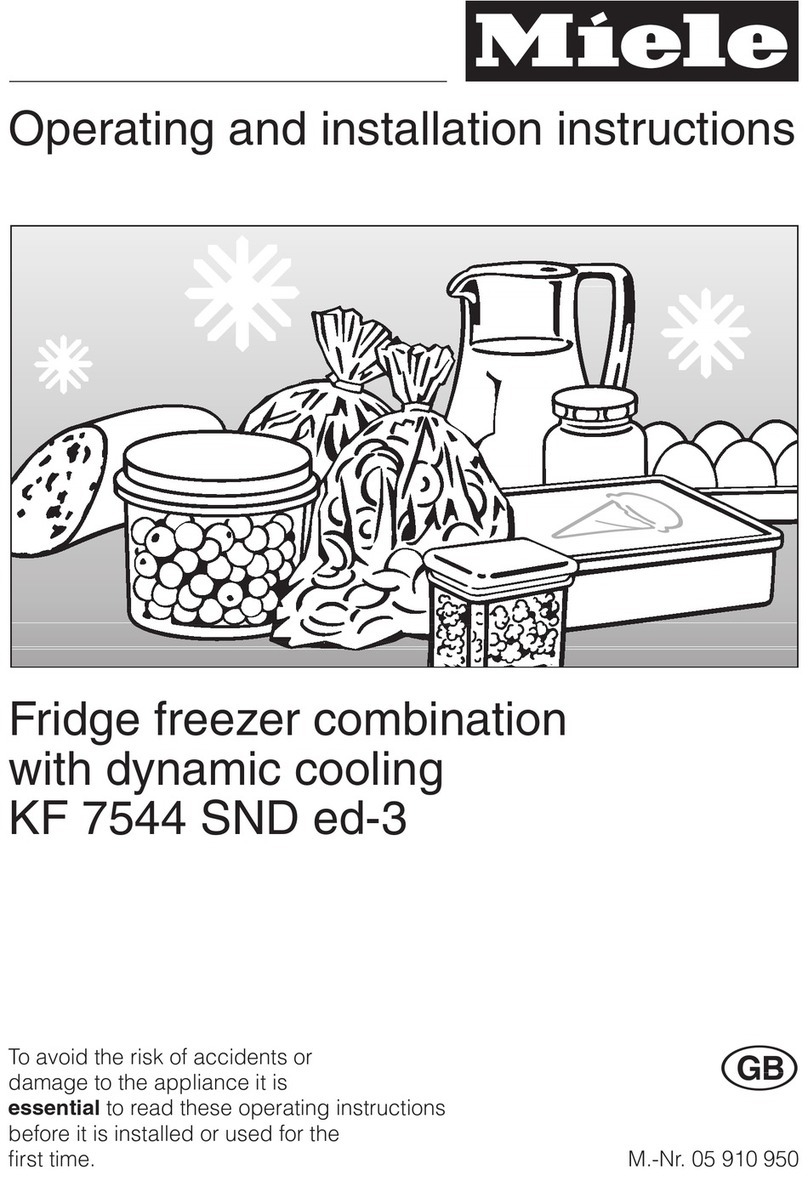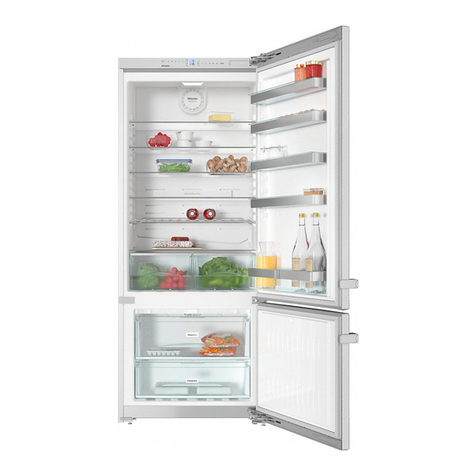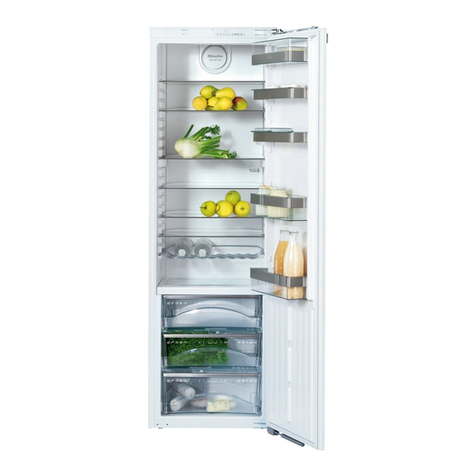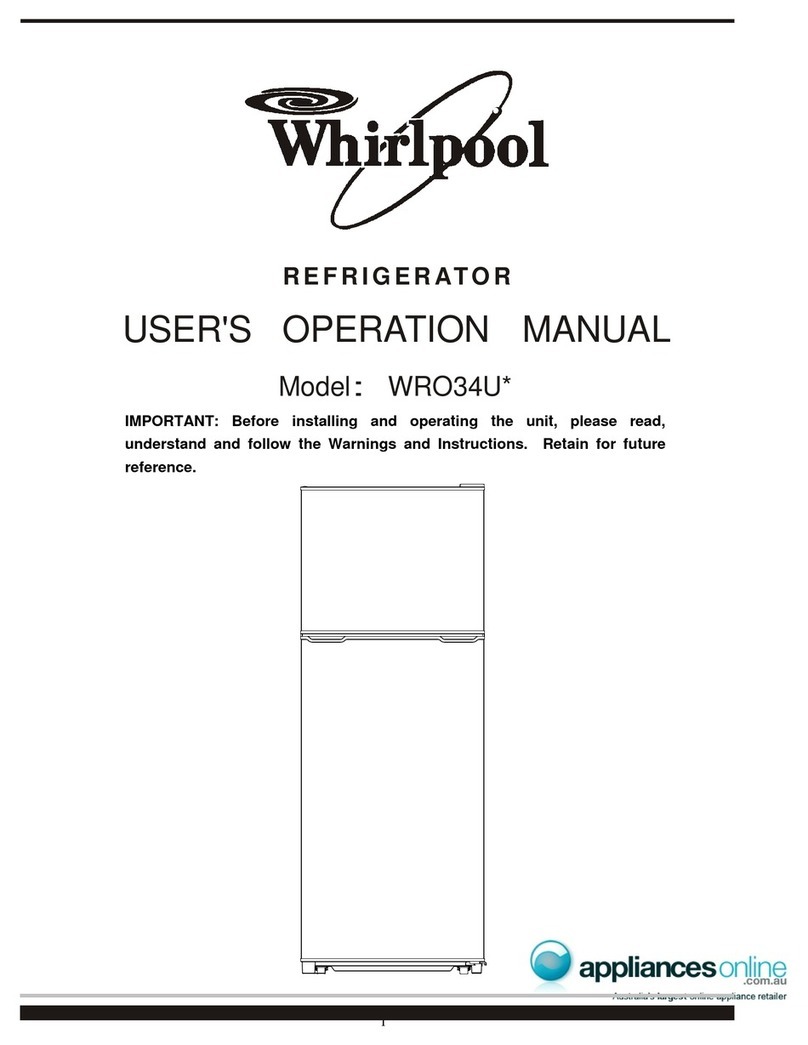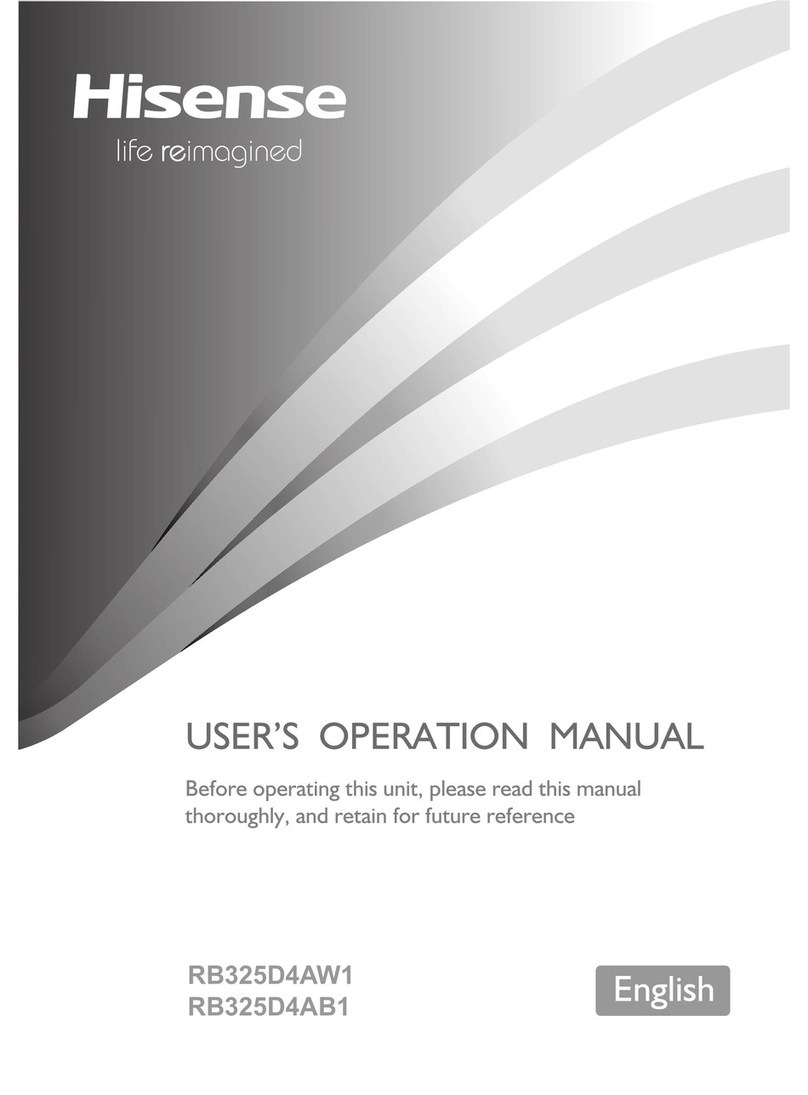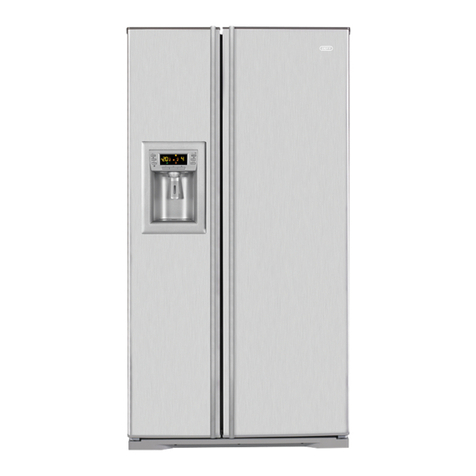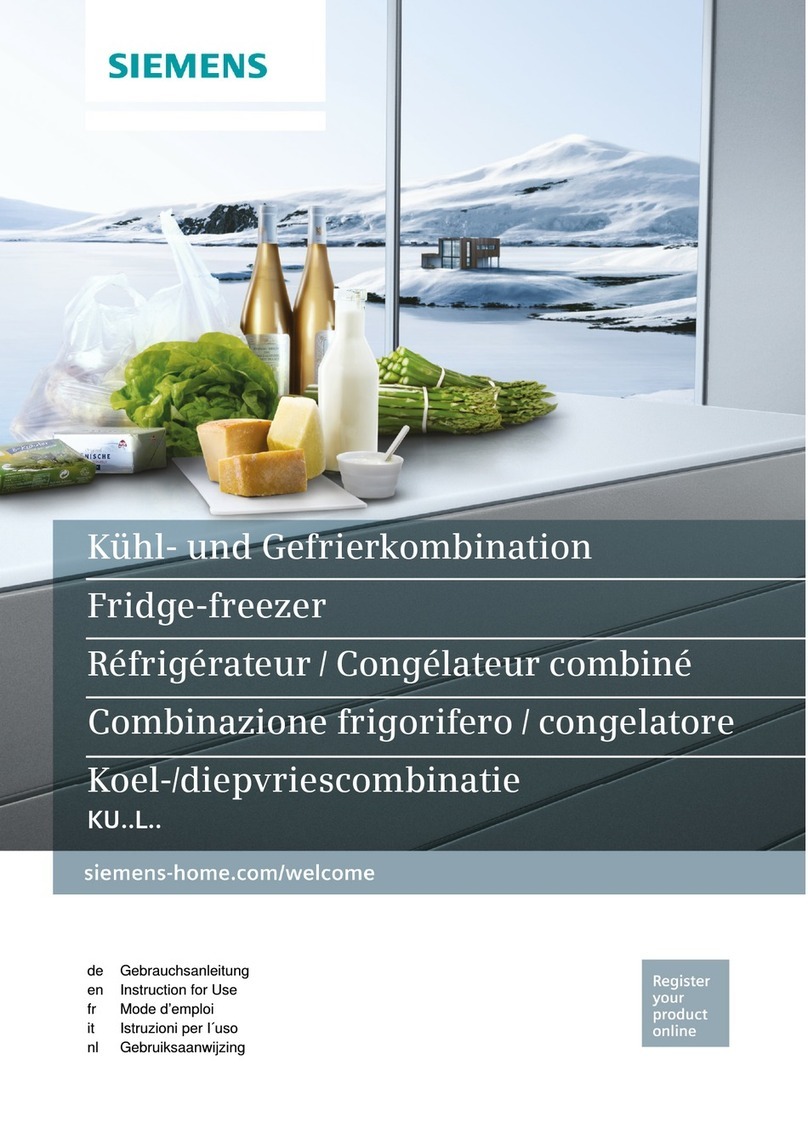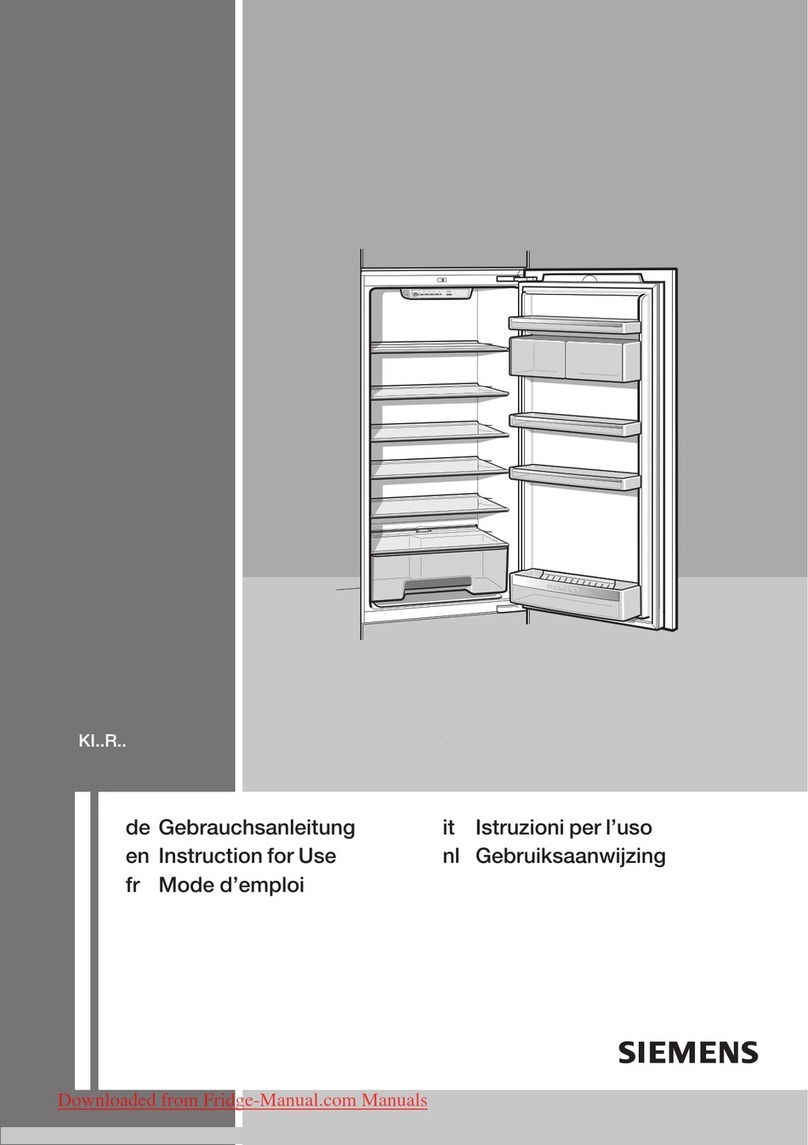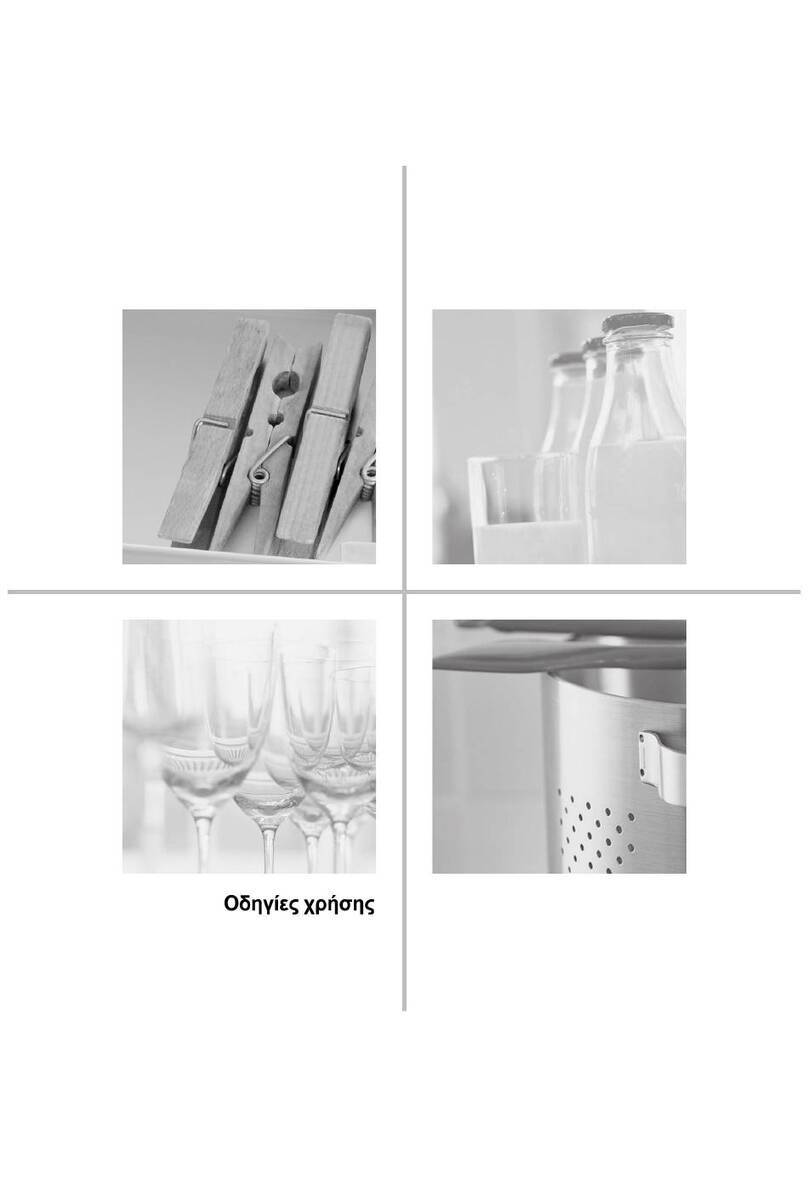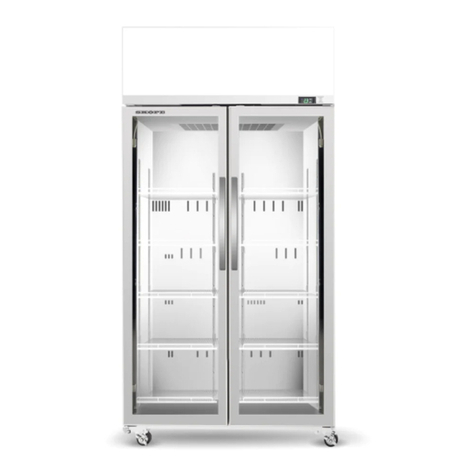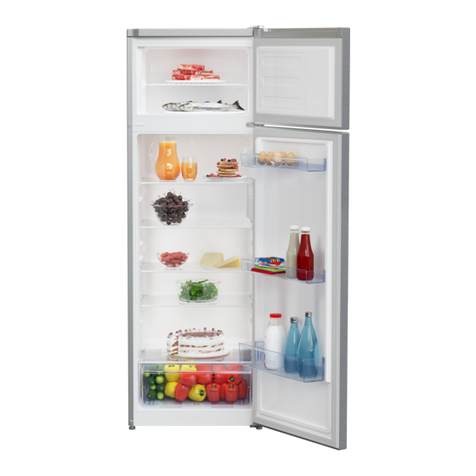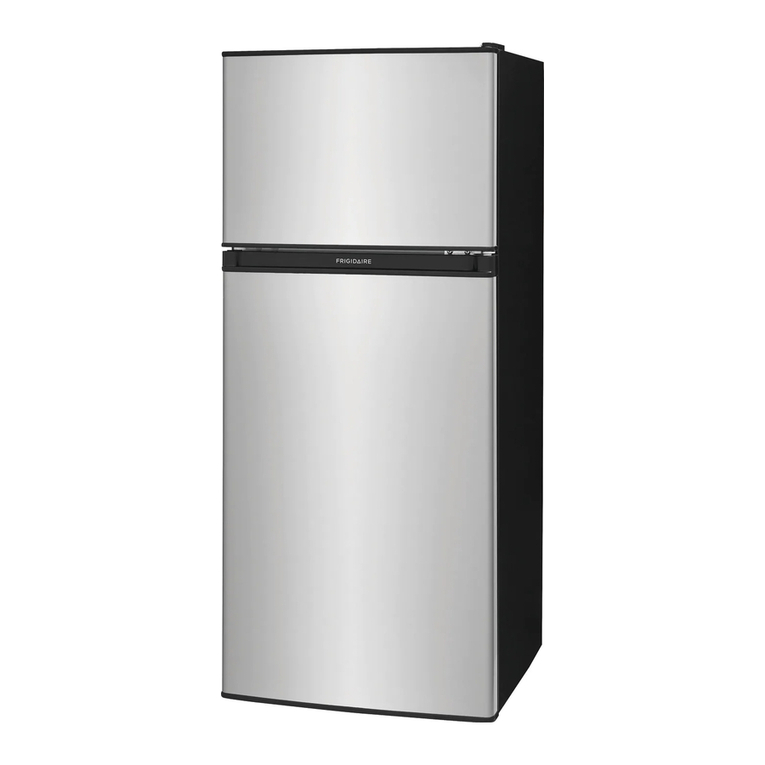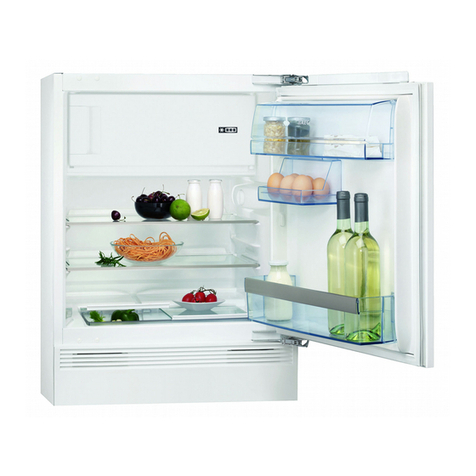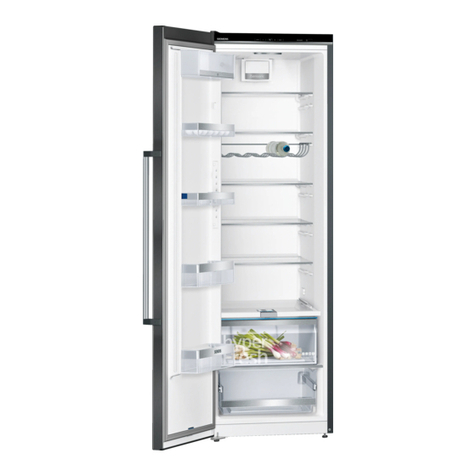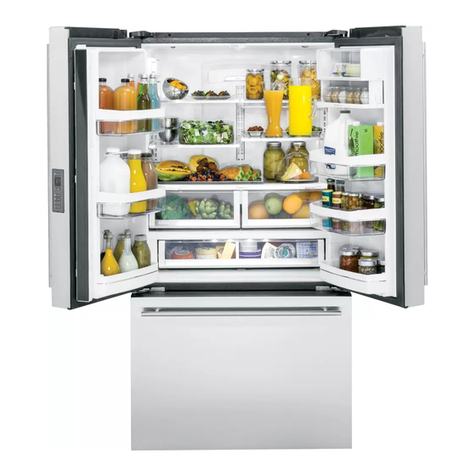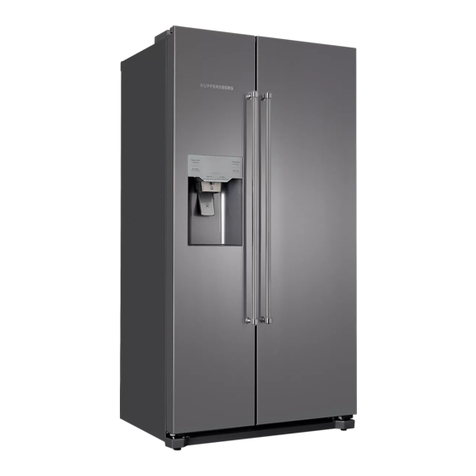Miele K 12421 SD Specification sheet

Operating and installation instructions
Refrigerator with Dynamic cooling
K 12421 SD
To avoid the risk of accidents or
damage to the appliance, it is
essential to read these instructions
before it is installed and used for the
first time. M.-Nr. 09 290 820
en-GB

Guide to the appliance .............................................4
Caring for the environment..........................................6
Warning and Safety instructions .....................................7
How to save energy ...............................................12
Switching on and off ..............................................13
Switching on .....................................................13
Switching off .....................................................13
Switching off for longer periods of time .................................13
Customising settings .............................................14
Settings mode X.................................................14
Altering the brightness of the display ................................14
The correct temperature ...........................................15
...intherefrigerator ..............................................15
Setting the temperature .............................................15
Temperature display ...............................................16
Super cool and Dynamic cooling ....................................17
Super cool .......................................................17
Dynamic cooling ..................................................17
Using the refrigerator efficiently ....................................19
Different storage zones .............................................19
Food which is not suitable for storing in the refrigerator ....................20
When shopping for food ............................................20
Storing food correctly ..............................................20
Fruit and vegetables .............................................20
Unpacked meat and vegetables ..................................21
Protein rich foods ...............................................21
Meat .........................................................21
Adjusting the interior fittings .......................................22
Moving the shelves ................................................22
Split shelf ........................................................22
Adjusting the door shelf/bottle shelf ...................................22
Automatic defrost ................................................23
Contents
2

Cleaning and care ................................................24
Cleaning the interior and accessories ..................................24
Appliance door, side panels .........................................25
Ventilation gaps ...................................................26
Door seal ........................................................26
Metal grille at the back of the appliance ................................26
Problem solving guide ............................................27
Noises .........................................................31
After Sales / Guarantee ............................................32
Information for dealers ............................................33
Demo mode r.....................................................33
Electrical connection..............................................34
Installation ......................................................35
Location .........................................................35
Climate range ..................................................35
Ventilation........................................................36
Installation .......................................................36
Aligning the appliance..............................................36
Appliance dimensions ..............................................37
Changing the door hinging .........................................38
Aligning the appliance door ........................................43
Building in the appliance ..........................................44
Contents
3

aOn/Off button
bSuper cool button
cDisplay
If the appliance is not operated for
some time, the display will revert
automatically to the brightness level
which has been set.
As soon as a button is pressed the
display will light up at the brightest
setting.
dMenu symbol
(Setting mode for the brightness
level of the display)
eSuper cool symbol
fTemperature display
gTemperature selector button
hDynamic cooling button
iDynamic cooling symbol
jBrightness symbol
Guide to the appliance
4

aControl panel
bDynamic cooling fan
cButter and cheese compartment
dEgg tray
eAdjustable shelves
fBottle rack
gBottle shelf
hCondensate channel and
drain hole
iFruit and vegetable containers
Guide to the appliance
5

Disposal of the packing
material
The transport and protective packing
has been selected from materials which
are environmentally friendly for
disposal, and should be recycled.
Ensure that any plastic wrappings,
bags etc. are disposed of safely and
kept out of the reach of babies and
young children. Danger of suffocation!
Disposal of your old appliance
Electrical and electronic appliances
often contain materials which, if
handled or disposed of incorrectly,
could be potentially hazardous to
human health and to the environment.
They are, however, essential for the
correct functioning of your appliance.
Please do not therefore dispose of it
with your household waste.
Please dispose of it at your local
community waste collection / recycling
centre or contact your dealer for
advice. Ensure that it presents no
danger to children while being stored
for disposal.
Take care not to damage the pipework
at the back of it before or during
transportation to an authorised
collection depot.
In this way, refrigerant in the pipework
and oil in the compressor will be
contained, and will not leak out into the
environment.
Caring for the environment
6

This appliance complies with all
relevant safety requirements.
Improper use can, however, present
a risk of both personal injury and
material damage.
To avoid the risk of accidents and
damage to the appliance, please
read these instructions carefully
before installation and before using
it for the first time. They contain
important notes on installation,
safety, operation and maintenance.
Keep these instructions in a safe
place and pass them on to any
future user.
Correct application
~This appliance is not designed for
commercial use. It is intended for use in
domestic households and in similar
working and residential environments
such as:
–Shops
–Offices and showrooms
and by residents in establishments
such as:
–Hostels and guest houses.
The appliance is not intended for
outdoor use.
It must only be used as a domestic
appliance to cool and store foodstuffs.
Any other usage is not supported by
the manufacturer and could be
dangerous. Miele cannot be held liable
for damage resulting from incorrect or
improper use or operation of the
appliance.
~The appliance can only be used by
people with reduced physical, sensory
or mental capabilities, or lack of
experience and knowledge, if they are
supervised whilst using it, or have been
shown how to use it in a safe way and
understand the hazards involved.
Safety with children
~Children 8 years and older may use
the appliance only if they have been
shown how to use it in a safe way and
understand the hazards involved.
~Children under 8 years of age must
be kept away from the appliance unless
they are constantly supervised.
~This appliance is not a toy! Do not
allow children to play with it or near it,
or to play with the controls. Do not let
them swing on the door.
Warning and Safety instructions
7

Technical safety
~Before setting up the appliance,
check it for any externally visible
damage. Do not install and use a
damaged appliance.
It could be dangerous.
~If the connection cable is faulty it
must only be replaced by a service
technician authorised by the
manufacturer to protect the user from
danger.
~This appliance contains the coolant
Isobutane (R600a), a natural gas which
is environmentally friendly. Although it
is flammable, it does not damage the
ozone layer and does not increase the
greenhouse effect. The use of this
coolant has, however, led to a slight
increase in the noise level of the
appliance. In addition to the noise of
the compressor, you might be able to
hear the coolant flowing around the
system. This is unavoidable, but does
not have any adverse effect on the
performance of the appliance. Care
must be taken during transportation
and setting up of the appliance that no
parts of the cooling system are
damaged. Leaking coolant can
damage the eyes.
In the event of any damage:
- avoid open flames and anything which
creates a spark,
- disconnect from the mains,
- air the room in which the appliance is
located for several minutes and
- contact the Service Department for
advice.
~The more coolant there is in an
appliance, the larger the room it should
be installed in. In the event of a
leakage, if the appliance is in a small
room, there is the danger of
combustible gases building up.
For every8gofcoolant at least 1 m3of
room space is required. The amount of
coolant in the appliance is stated on the
data plate inside the appliance.
~Safe operation of the appliance is
only assured if it has been installed and
connected in accordance with these
operating and installation instructions.
~Before connecting the appliance,
check that the connection data on the
data plate (voltage and connected
load) match the mains electricity
supply,
This data must correspond in order to
avoid the risk of damage to the
appliance. Consult a qualified
electrician if in any doubt.
~Do not connect the appliance to the
mains electricity supply by a
multi-socket adapter or an extension
lead. These do not guarantee the
required safety of the appliance (e.g.
danger of overheating).
Warning and Safety instructions
8

~The electrical safety of this
appliance can only be guaranteed if
correctly earthed. It is most important
that this basic safety requirement is
observed and regularly tested and
where there is any doubt, the
household wiring system should be
inspected by a qualified electrician.
The manufacturer cannot be held liable
for damage or injury caused by the lack
of or inadequacy of an effective
earthing system (e.g. electric shock).
~Installation, maintenance and
repairs may only be carried out by a
suitably qualified and competent
person in strict accordance with current
national and local safety regulations.
Repairs and other work by unqualified
persons could be dangerous. The
manufacturer cannot be held liable for
unauthorised work.
~While the appliance is under
guarantee, repairs should only be
undertaken by a service technician
authorised by the manufacturer.
Otherwise the guarantee will be
invalidated.
~The appliance must be isolated from
the electricity supply during installation,
maintenance and repair work.
~Faulty components must only be
replaced by genuine Miele original
spare parts. The manufacturer can only
guarantee the safety of the appliance
when Miele replacement parts are
used.
~This appliance must not be used in
a non-stationary location (e.g. on a
ship).
~In areas which may be subject to
infestation by cockroaches or other
vermin, pay particular attention to
keeping the appliance in a clean
condition at all times. Any damage
which may be caused by cockroaches
or other vermin will not be covered by
the guarantee.
Warning and Safety instructions
9

Correct use
~Do not store explosive materials in
the appliance or any products
containing propellants (e.g. spray
cans). Thermostats switching on may
produce sparks which could present a
fire hazard. Flammable compounds
could explode.
~Do not operate any electrical
equipment (e.g. an electric ice-cream
maker) inside the appliance. Danger of
sparking and explosion.
~If storing alcohol with a high
percentage proof in the refrigerator,
make sure the bottle is tightly closed
and stored upright. Danger of
explosion.
~Observe the "use by" dates given on
food to avoid the risk of food poisoning.
Storage times will depend on several
factors, including the freshness and
quality of the food as well as the
temperature at which it is stored. Follow
the instructions given on food
manufacturer's packaging on storage
conditions required, as well as the "use
by" date.
~Do not use sharp edged objects to
–remove frost and ice,
–separate food which has become
frozen.
They will damage the evaporator,
causing irreversible damage to the
appliance.
~Do not use defrosting sprays or
de-icers, as they might contain
substances which could damage the
plastic parts or which could cause a
build-up of gases and pose a danger to
health.
~Do not use a steam-cleaning
appliance to clean this appliance.
Steam could reach the electrical
components and cause a short circuit.
~Do not use any oils or grease on the
door seals, as these will cause the
seals to deteriorate and become
porous with time.
~If storing food which contains a lot of
fat or oil, make sure that it does not
come into contact with plastic
components as this could cause stress
cracks.
~Do not block the ventilation gaps in
the appliance as this would impair the
efficiency of the appliance, increase the
electricity consumption and could
cause damage to the appliance.
~The appliance is designed for use
within certain climate ranges (ambient
temperatures), and should not be used
outside this range. The climate range
for your appliance is stated on the data
plate inside the appliance.
Installing it in a room with too low an
ambient temperature, e.g. a garage,
will lead to the appliance switching off
for longer periods so that it cannot
maintain the required temperature.
Warning and Safety instructions
10

Disposal of your old appliance
~Before disposing of an old
appliance, first make the door latch or
lock unusable.
This way you will prevent children from
accidentally locking themselves in and
endangering their lives.
~Be careful not to damage any part of
the pipework whilst awaiting disposal,
e.g. by
–puncturing the refrigerant channels
in the evaporator.
–bending any pipework.
– scratching the surface coating.
Splashes of refrigerant can damage the
eyes.
The manufacturer cannot be held
liable for damage caused by
non-compliance with these Warning
and Safety instructions.
Warning and Safety instructions
11

Normal energy
consumption
Increased energy
consumption
Installation site In a ventilated room. In an enclosed, unventilated room.
Protected from direct sunlight. In direct sunlight.
Not near to a heat source (radiator,
oven).
Near to a heat source (radiator,
oven).
Where the ideal ambient room
temperature is approx. 20°C.
Where there is a high ambient room
temperature.
Do not cover the ventilation gaps
and dust them regularly.
Temperature setting
with a thermostat
which is approximate
(set in stages).
With a medium setting of 2 to 3. With a high setting: the lower the
temperature in the compartment, the
higher the energy consumption.
Temperature setting
with a thermostat which
is exact to the degree
(digital display).
Larder section 8 to 12 °C
On appliances with winter setting,
please make sure that the winter
setting is switched off when the
ambient temperature is warmer than
16 °C .
Refrigerator section 4 to 5 °C
PerfectFresh zone just above 0 °C
Freezer section -18 °C
Wine storage section 10 to 12 °C
Use Drawers, shelves and racks
arranged as they were when the
appliance was delivered.
Only open the door when necessary
and for as short a time as possible.
Frequent opening of the door for
long periods will cause a loss of
coldness.
Store food in an organised way. Searching for an item will mean the
door is open for longer.
Allow hot food and drinks to cool
down before placing them in the
appliance.
Hot food will cause the compressor
to run for a long time, as the
appliance will have to work harder
to reduce the temperature.
Store food covered or packaged. The evaporation or condensation of
liquids will cause a loss of coldness
in the refrigerator.
Place frozen food in the refrigerator
to defrost.
Do not over-fill the appliance to
allow air to circulate.
Defrosting Defrost the freezer section when a
layer of ice 0.5 cm thick (maximum)
has built up.
A layer of ice hinders the cold from
reaching the frozen food, and
increases energy consumption.
How to save energy
12

Before using for the first time
Protective foil
The stainless steel trim in the interior
has a layer of protective foil to prevent
damage during transportation.
On stainless steel appliances, there will
also be protective foil on the stainless
steel door and on some appliances on
the side panels as well.
^Do not remove the foil until the
appliance has been positioned in its
final location.
Cleaning
^Clean the inside of the appliance and
the accessories with lukewarm water
and a little washing-up liquid, and
then dry with a soft cloth.
Switching on
^Press the On/Off button.
The appliance will start to cool and the
temperature required will appear in the
temperature display. The interior
lighting will come on when the door is
opened.
Switching off
^Press the On/Off button until the
display goes out.
The cooling system is switched off.
Switching off for longer
periods of time
If the appliance is not going to be used
for a longer period of time, e.g. whilst
on holiday:
^switch the appliance off,
^disconnect it from the mains,
^clean the appliance out and
^leave the door ajar to air it.
If, during a long absence, the
appliance is switched off but not
cleaned out and the door is left shut,
there is a danger of mould and
odours building up inside the
appliance.
Switching on and off
13

Settings mode X
You can alter the brightness of the
display sin Settings mode.
Settings mode is represented in the
display by the Menu symbol X. The
following section describes how to
access Settings mode and alter
settings.
Altering the brightness of the display
The display brightness can be adjusted
to suit the lighting conditions of the
room.
There are five different display
brightness settings. The factory default
setting is 1.
^Press the Super cool button for
approx. five seconds.
The Menu symbol Xwill light up,
settings mode is now activated. The
Brightness symbol swill start
flashing.
^Press the Super cool button briefly to
confirm this.
The Brightness symbol swill light
up.
^Press the Temperature button
repeatedly until the brightness level
required is reached.
The more areas of the temperature
display which light up, the brighter
the display.
To confirm the altered setting:
^Press the Super cool button briefly.
The Brightness symbol swill flash.
The newly selected setting has been
saved.
To come out of Settings mode:
^Press the On/Off button.
or
^Wait for 5 minutes.
The Menu and Brightness symbols
will go out.
The temperature display will show
the required temperature.
Customising settings
14

It is very important to set the correct
temperature for storing food in the
appliance. Micro-organisms will cause
food which is not stored at the correct
temperature to deteriorate rapidly.
Temperature influences the growth rate
of these micro-organisms. Reducing
the temperature reduces their growth
rate.
The temperature in the appliance will
rise:
–the more often the door is opened
and the longer it is kept open,
– the more food that is placed in it,
– the warmer the food is which is being
put into it,
– the higher the ambient temperature
surrounding the appliance.
The appliance is designed for use in
specific ambient temperatures
(climate ranges). Do not use in
ambient temperatures for which it is
not designed.
...intherefrigerator
We recommend a temperature of 5°C
in the middle of the refrigerator.
Setting the temperature
^Press the temperature selector button
repeatedly until the indicator light for
the temperature you want lights up in
the display.
The first time you press the button the
indicator light for the last temperature
you set will flash in the display.
The temperature value will change up
until the setting for 9 °C is reached. It
will then drop back to the 1 °C setting.
The newly selected temperature will be
adopted automatically after a short
while.
The indicator for the temperature which
has been set for the refrigerator will
light up constantly.
The temperature can be set slightly
colder than shown in the display if
wished.
The following example shows how this
option works:
The correct temperature
15

To set the temperature between 5 and
7 °C to be slightly colder:
^Press the temperature selector button
repeatedly until the indicator for 5 °C
lights up.
^Press the button for approx. another
5 seconds to set the temperature.
The colder temperature setting within
the small temperature range is now set.
However, this is not visible in the
temperature display.
Temperature display
The temperature display on the
control panel always shows the
required temperature.
The temperature can be adjusted from
1°Cto9°C.
The correct temperature
16

Super cool
The Super cool function can be used to
rapidly reduce the temperature in the
refrigerator to its lowest setting
(depending on the room temperature).
Switching on Super cool
Super cool is particularly
recommended for the faster chilling of
large amounts of fresh food or drink.
^Press the Super cool button.
The Super cool symbol ªwill light
up. The appliance will work at full
power to lower the temperature in the
appliance.
Switching off Super cool
The Super cool function will switch itself
off automatically after approx. 6 - 12
hours. The Super cool ªsymbol will go
out and the appliance will run at normal
power again.
To save energy, the Super cool function
can be switched off once food and
drinks are sufficiently chilled.
^Press the Super cool button. The
Super cool symbol ªwill go out.
Dynamic cooling
When the Dynamic cooling function is
not switched on, the natural circulation
of air in the appliance will cause
different temperature zones in the
refrigerator as the cold, heavy air will
sink to the lowest section of the
appliance. You should bear this in mind
when placing food in the appliance
(see "Using the refrigerator efficiently").
However, if you are placing a large
amount of food in the refrigerator at any
one time, it is a good idea to switch on
Dynamic cooling. This way you can
distribute the temperature inside the
appliance to all areas more evenly so
that all the food will be chilled to about
the same degree.
The temperature is set as normal with
the Temperature button.
Dynamic cooling should also be
selected when:
– the ambient temperature in the room
is high (above approx. 30 °C), and
–the room humidity level is high (e.g.
during summer).
Super cool and Dynamic cooling
17

Switching on Dynamic cooling
^Press the Dynamic cooling button.
The Dynamic cooling symbol ¢will
light up.
The Dynamic cooling fan is now
ready to operate. It will switch on
automatically when the compressor
switches on.
Switching off Dynamic cooling
^Press the Dynamic cooling button.
The Dynamic cooling symbol will go
out.
To save energy, the Dynamic
cooling fan switches off
automatically whilst the door is
open.
Super cool and Dynamic cooling
18

Different storage zones
Due to the natural circulation of the air
in the appliance, there are different
temperature zones in the refrigerator.
Cold, heavy air sinks to the lowest
section of the appliance. Make use of
the different zones when placing food
in the appliance.
This appliance has dynamic cooling,
which helps to keep an even
temperature when the fan is running.
When Dynamic cooling is switched
on, the difference between the
various zones less pronounced.
Warmest area
The warmest area is in the top section
of the door. Use this for storing butter
and cheese.
Coldest area
The coldest area in a refrigerator is
directly above the vegetable containers
and at the back wall.
Use this for all delicate and highly
perishable food, e.g.
–fish, meat, poultry,
–sausage products, ready meals,
–dishes or baked goods containing
eggs or cream,
–fresh dough, cake mixtures, pizza or
quiche dough,
–soft cheese and other dairy
products,
–pre-packed vegetables and other
fresh food with a label stating it
should be kept at a temperature of
approx. 4 °C.
Do not store explosive materials in
the appliance or any products
containing propellants (e.g. spray
cans). Danger of explosion.
If storing alcohol with a high
percentage proof, make sure it is
tightly closed, and store upright.
Please be aware if storing cooking
oil in the appliance that traces of oil
can cause stress cracks to occur in
plastic components.
Food must not touch the back wall of
the appliance, as it may freeze to
the back wall.
To allow air to circulate efficiently,
do not pack food too closely
together in the refrigerator. Do not
cover the fan in the rear wall of the
refrigerator, as this is essential for
keeping the appliance cool.
Using the refrigerator efficiently
19

Food which is not suitable for
storing in the refrigerator
Not all food is suitable for storing in a
refrigerator at temperatures below 5 °C,
as some food does not tolerate cold
temperatures. Cucumbers, for example,
become glassy, aubergines bitter and
potatoes sweet. Tomatoes and oranges
loose their aroma, and the peel on
citrus fruits hardens.
Food which does not tolerate cold
temperatures includes:
–Pineapple, avocado, bananas,
pomegranate, mango, melon,
papaya, passion fruit,
citrus fruit (such as lemons, oranges,
mandarins, grapefruit),
– Fruit which is not yet ripe,
– Aubergines/egg plant, cucumber,
potatoes, peppers/capiscum,
tomatoes, courgettes/zucchini,
– Some hard cheeses, e.g. Parmesan.
When shopping for food
The freshness of food when first placed
in the appliance is an important factor in
determining how long it stays fresh.
Time out of the refrigerator, e.g. during
transportation, should be kept to a
minimum. For example, do not allow
food to stay in a hot car for too long.
Once food has started to deteriorate,
this process cannot be reversed. As little
as two hours outside the refrigerator can
cause food to start deteriorating.
Storing food correctly
Store food covered or packaged. This
will prevent food smells from affecting
other food, food from drying out, and
also any cross-contamination of
bacteria. The growth of bacteria, such
as salmonella, can be avoided by
setting the correct temperature and
maintaining good standards of hygiene.
Fruit and vegetables
Fruit and vegetables may be stored
loose in the vegetable containers.
However, please bear in mind that not
all types of fruit and vegetables are
suitable for storing in the same
container. Aromas and flavours can
transfer from one type of food to
another (e.g. carrots absorb the smell
and flavour of onions very easily). Some
food also gives off a natural gas
(ethylene) which speeds up the rate at
which other food perishes. Some fruit
and vegetables react strongly to this
gas and should not be stored together.
Examples of fruit and vegetables
which produce a large amount of this
natural gas are:
Apples, apricots, pears, nectarines,
peaches, plums, avocados, figs,
blueberries, melons and beans.
Using the refrigerator efficiently
20
Table of contents
Other Miele Refrigerator manuals
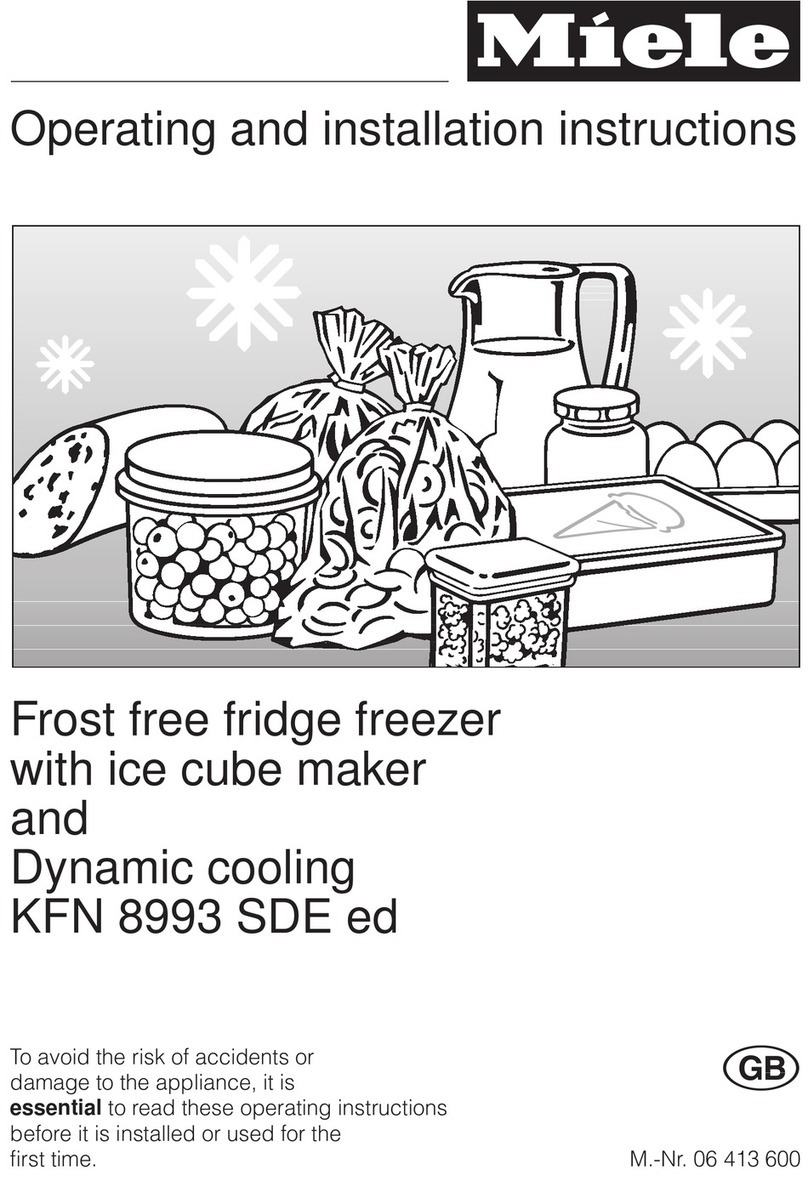
Miele
Miele KFN 8993 SDE ed Specification sheet
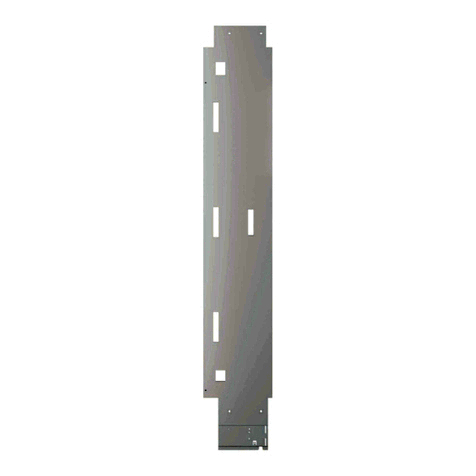
Miele
Miele KSK 2002 User manual
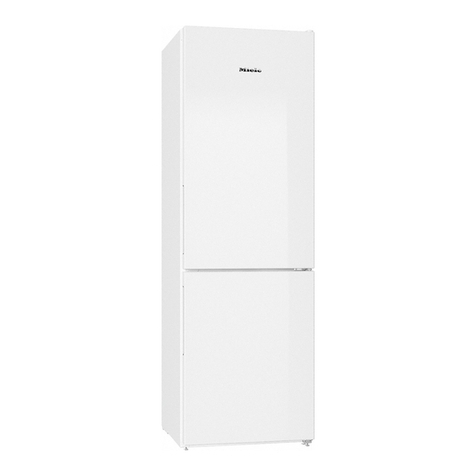
Miele
Miele KFN 28132 D ws User manual

Miele
Miele KFN 9758 iD-3 User manual

Miele
Miele K 35422 iD User manual

Miele
Miele K 2319 S User manual
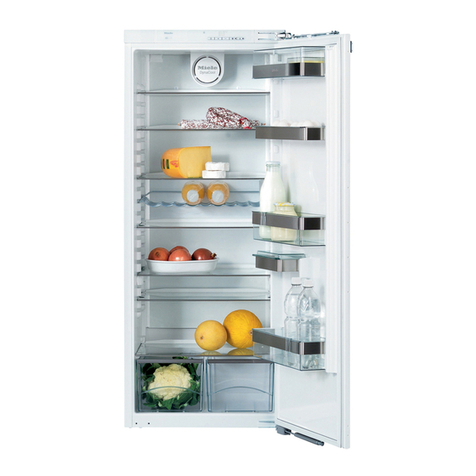
Miele
Miele K9552 User manual
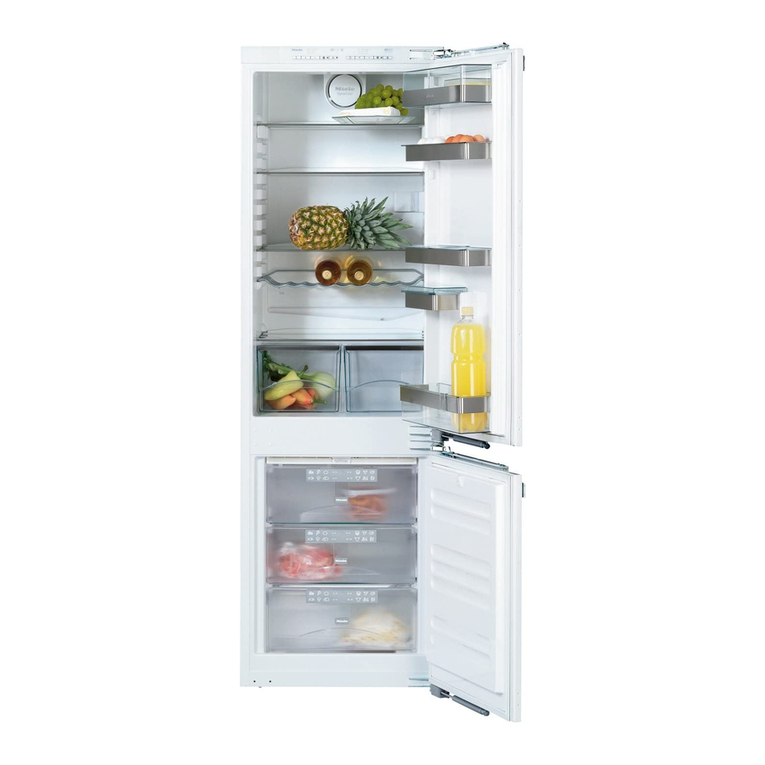
Miele
Miele KFN 9753 ID User manual
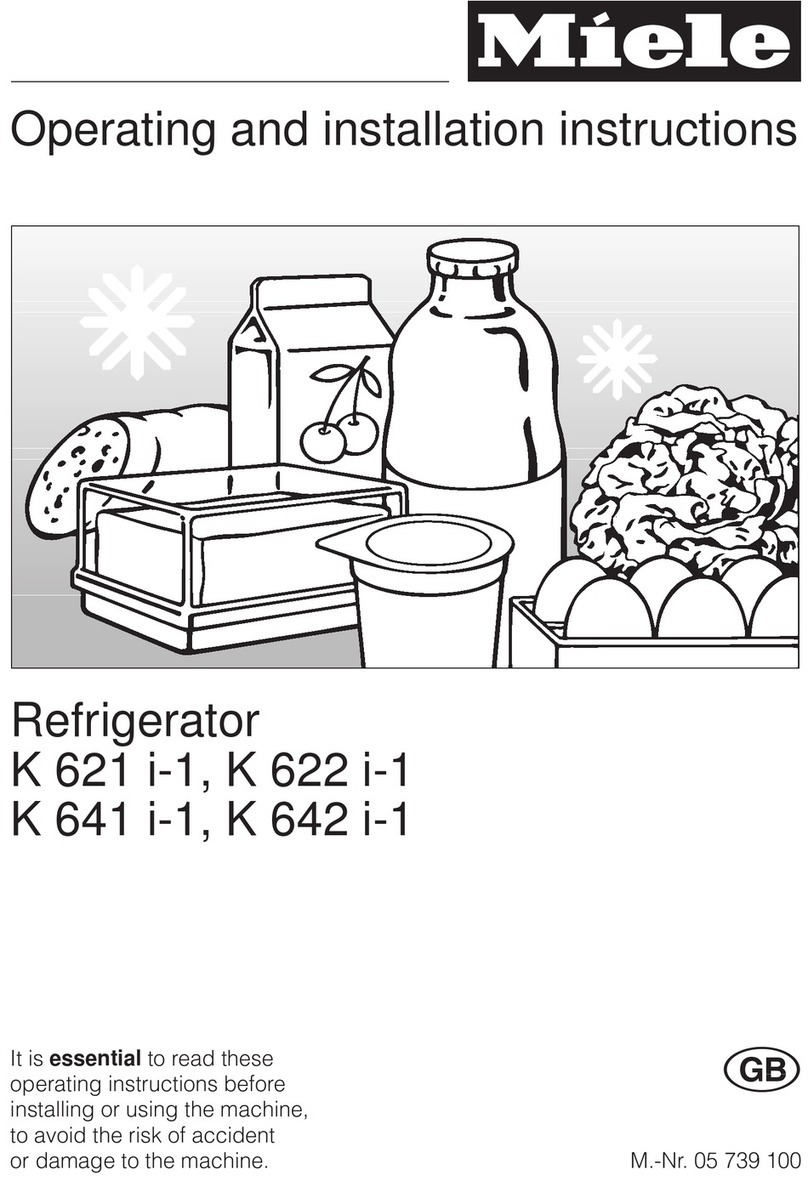
Miele
Miele K 642 i-1 User manual

Miele
Miele KFN 9753 ID User manual
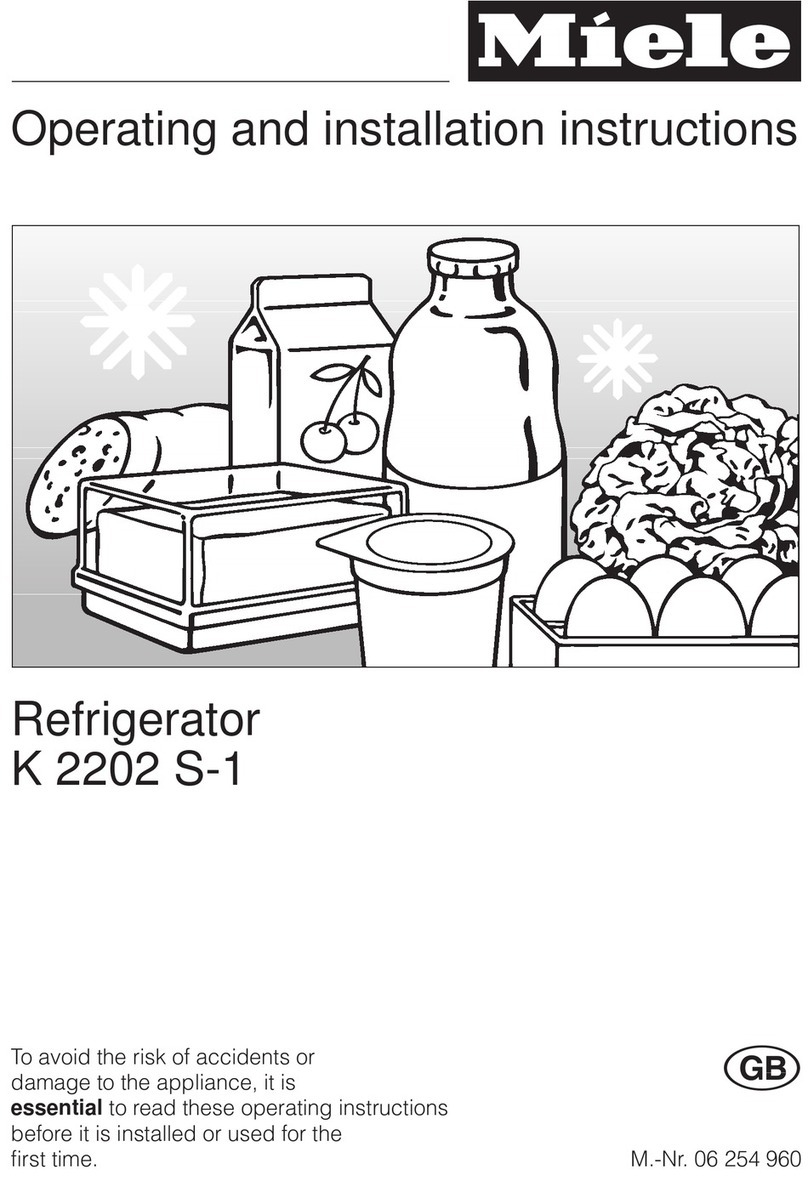
Miele
Miele K 2202 S-1 User manual

Miele
Miele KFN 7734 F User manual

Miele
Miele K 34472 iD User manual
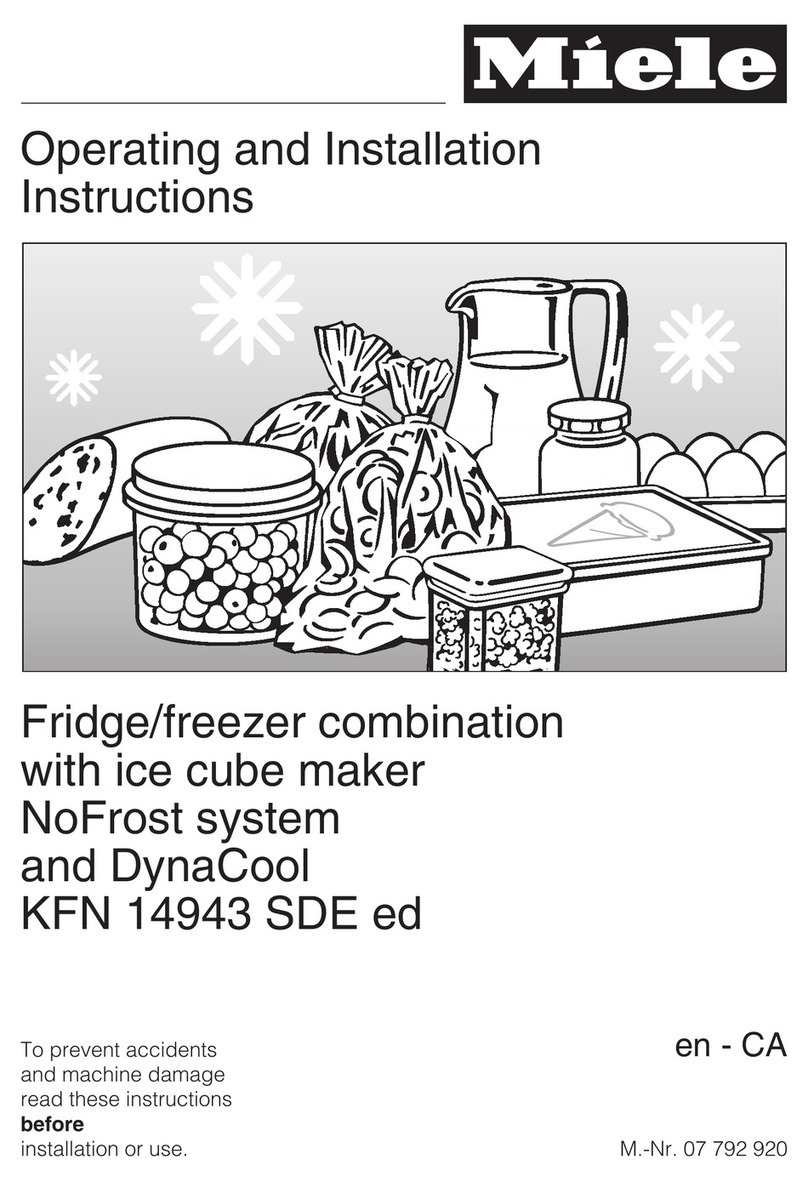
Miele
Miele KFN 14943 SDE ED User manual
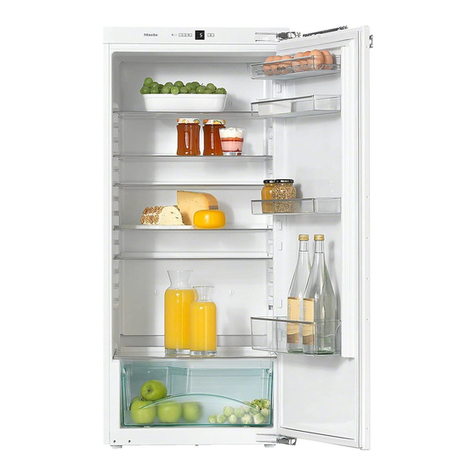
Miele
Miele K 32222 i User manual

Miele
Miele KFN 9855 iDE User manual

Miele
Miele KFN 9855 iDE User manual
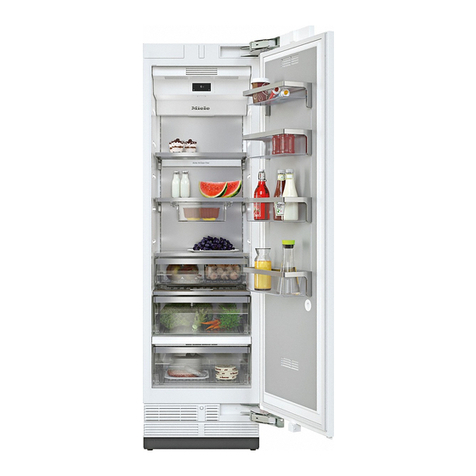
Miele
Miele K 2601 Vi User manual
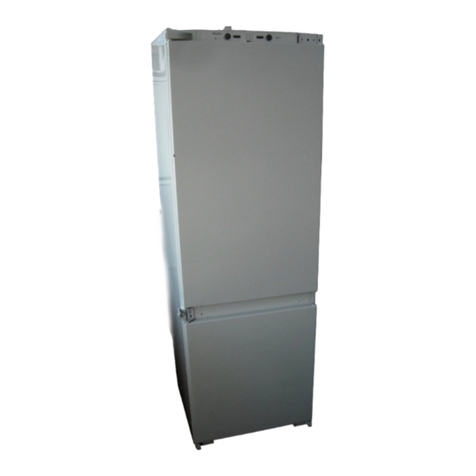
Miele
Miele KDN 9713 iD Specification sheet
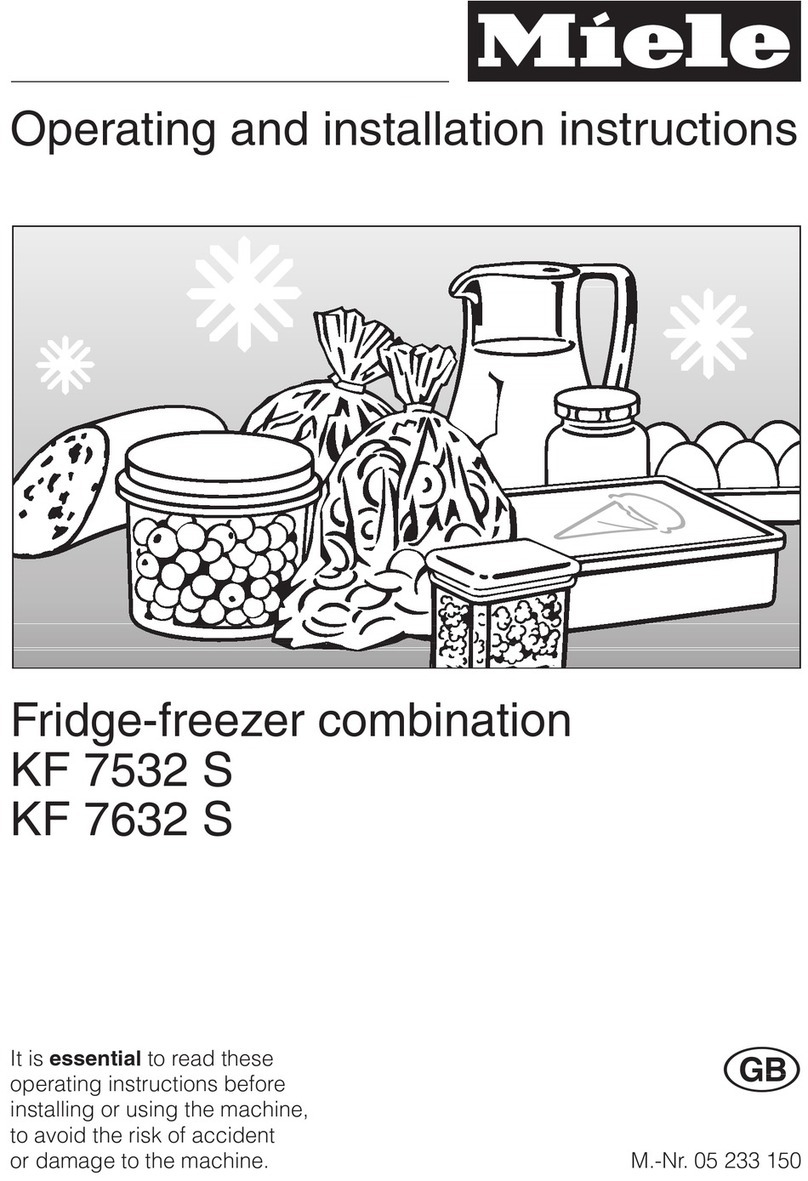
Miele
Miele KF 7632 S Specification sheet
